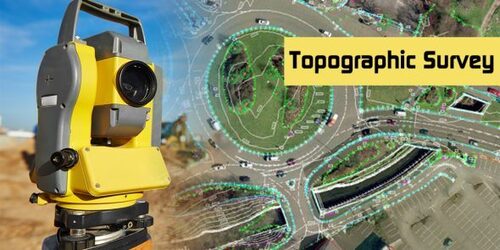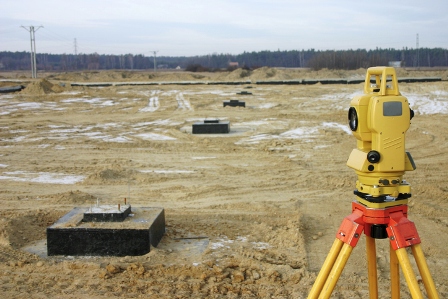Key Steps in Setting Out Engineering for Effective Construction Execution
Essential Tools and Strategies in Setting Out Engineering
The technique of establishing out engineering counts heavily on a collection of crucial devices and methods that underpin the accuracy and performance of task execution. Instruments such as property surveyor's levels, complete stations, and advanced GPS innovation are essential for developing specific reference points. The integration of typical techniques with contemporary methods, consisting of geospatial evaluation and 3D modeling, uses significant advantages in imagining website conditions. Comprehending how these elements connect is critical for boosting and lessening mistakes project outcomes, yet the nuances of their application typically stay neglected. What effects does this hold for future engineering methods?
The Relevance of Accurate Measurements

The value of exact dimensions expands beyond plain conformity; they are important to the general effectiveness of engineering procedures. Inaccuracies can result in material waste, job delays, and boosted labor prices, ultimately affecting the project's bottom line. Specific dimensions enhance the quality of the final item, ensuring that it executes as meant and satisfies the expectations of stakeholders.
Furthermore, the value of precise measurements is evident in numerous engineering disciplines, including civil, mechanical, and electric design. Therefore, fostering a society that focuses on precision is crucial for the future of engineering.
Essential Devices for Laying Out
Laying out, an important stage in the design and building and construction procedure, depends heavily on details devices that make sure accurate area and alignment of structures. Amongst these devices, the property surveyor's degree attracts attention, supplying specific straight dimensions necessary for establishing recommendation points. This tool enables engineers to determine altitude modifications and keep uniformity across the task website.
The total station is an additional important device, integrating electronic distance measurement with angular dimension abilities. This modern technology improves performance and accuracy in capturing spatial information, permitting reliable website format and planning.
In addition, making use of determining tapes and noting devices, such as chalk lines or stakes, is basic for momentarily noting boundaries and important factors on the website. These fundamental tools, though simple, are vital for ensuring clear communication among the building and construction group relating to project specs.
Finally, GPS technology has actually gained traction in laying out procedures, providing real-time placing data and significantly improving precision over conventional methods. Jointly, these important tools create the backbone of effective laying out methods, ultimately contributing to the successful execution of design and construction jobs.
Advanced Checking Techniques
Advanced checking methods play an essential function in enhancing the accuracy and efficiency of design projects. These methods encompass a series of techniques that supply accurate data for layout and building and construction. Standard methods, such as progressing and triangulation, have actually advanced right into a lot more innovative approaches, consisting of Overall Station surveys and International Navigation Satellite Systems (GNSS)
Complete Terminal tools incorporate digital theodolites with distance measurement capacities, permitting land surveyors to gather accurate location data with terrific rate. This modern technology dramatically minimizes mistakes connected with hands-on dimensions and offers real-time information handling. Moreover, GNSS provides unmatched accuracy for large projects by using satellite signals to figure out exact positioning, which is vital for aligning structures and making certain compliance with style requirements.
In addition to these devices, progressed techniques additionally incorporate geospatial analysis and 3D modeling. These techniques make it possible for engineers to imagine terrain and site conditions more properly, promoting much better decision-making during the preparation stage. By employing these advanced evaluating strategies, engineering jobs can achieve better precision in layout, minimize rework, and inevitably boost total project success.
Digital Innovation in Design
The combination of digital innovation has changed engineering methods, improving both productivity and precision throughout different self-controls. Tools such as Structure Details Modeling (BIM) facilitate the visualization and monitoring of complex tasks, enabling engineers to work together seamlessly and make educated choices. This technology makes it possible for the production of in-depth 3D models, which can be assessed for architectural honesty and performance before building and construction starts.

The application of synthetic knowledge and maker understanding in design procedures even more improves anticipating maintenance and optimization of sources. Generally, digital innovation is improving the engineering landscape, driving advancement, and making sure that projects are finished with better Continue effectiveness and decreased threat.
Finest Practices for Execution
When executing digital modern technology in design, it is critical to establish a strategic method that lines up with job objectives and organizational capacities. A comprehensive assessment of existing operations and technology framework is vital to determine gaps and chances for enhancement. Engaging stakeholders early at the same time promotes cooperation and guarantees that the modern technology meets customer needs.

Task supervisors ought to adopt an iterative implementation strategy, enabling changes based on real-time comments and performance analyses. This dexterous strategy not just alleviates dangers yet additionally promotes constant renovation by integrating lessons learned.
Final Thought
In conclusion, the integration of crucial tools and progressed methods in laying out engineering is important for making certain precision in measurements and effective task implementation. Employing instruments such as property surveyor's degrees, total terminals, and GPS technology, together with modern surveying approaches, improves accuracy and lowers the possibility of errors. Adopting best techniques in application additionally maximizes these procedures, inevitably promoting improved project end results in the engineering and building sectors.
The discipline of setting out engineering relies heavily on a collection of vital tools and techniques that underpin the precision and performance of task implementation.Moreover, the value of exact dimensions is evident in numerous engineering disciplines, consisting of civil, mechanical, and electrical design. By employing these advanced checking techniques, design tasks can accomplish higher accuracy in format, minimize rework, and ultimately boost overall project success.
Overall, electronic innovation is reshaping the engineering landscape, driving technology, and guaranteeing that my review here projects are completed with higher effectiveness and reduced risk (setting out engineering).In conclusion, the integration of crucial tools and progressed strategies in establishing out design is crucial for making sure accuracy in dimensions and effective task implementation